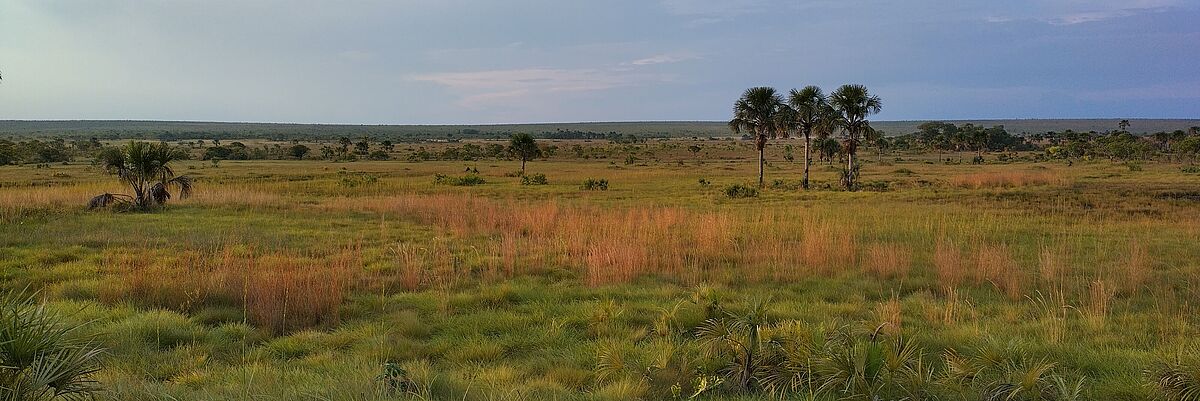Peatlands in Cerrado
Unveiling hidden carbon stocks in headwater zones of the Cerrado Savanna, Brazil
This projects aims at providing basic understanding of the distribution of peatlands in the Cerrado and their carbon stocks, that are yet very poorly known. In the light of the two main threats to Cerrado wetlands: 1.) the constant large-scale destruction of natural vegetation for the expansion of industrial-scale agriculture and 2.) the aggravating climate crisis with increasing temperatures and more frequent droughts; this better picture of these carbon-rich ecosystems should also help to inform better protection policies and management for nature and the people that rely on them. A interdisciplinary approach combining ecological field work with modern remote-sensing techniques set the methodological frame of this project. The objectives are to provide better ecological knowledge on the peatland in the headwater wetlands of the Cerrado, generate maps of peatland and wetland distribution for the study regions, and determine peat depths and carbon stocks of the peatlands.
- Beer, F. et al. Peatlands in the Brazilian Cerrado: insights into knowledge, status and research needs. Perspectives in Ecology and Conservation 22, 260–269 (2024). (review article)
- Nunes da Cunha, C. et al. CAPÍTULO 18 ECOSSISTEMAS VEREDAS DO BRASIL: Situação do conhecimento científico, tipologias e recomendação para sua proteção. (2024) IN: Inventário das áreas úmidas brasileiras: Distribuição, ecologia, manejo, ameaças e lacunas de conhecimento. Carlini & Caniato Editorial, Cuiabá, MT, Brazil (Book chapter)
- Greifswald Mire Centre, Federal University of the Jequitinhonha and Mucuri valleys (Brazil), Instituto National de Pesquisa do Pantanal (Brazil) (2024): Peatlands in Brazil - the most carbon-dense ecosystem under threat. (Information paper)
Project overview
Period: 01/2022 - 12/2025
Funding: Heinrich-Böll-foundation
Members: Felix Beer (Doctoral student & researcher)
Supervisors: Sebastian van der Linden (University of Greifswald, DE); Matthias Wantzen (University of Strasbourg, FR); Leila Maria Garcia Fonseca (Instituto National de Pesquisas Especiais, BRA)

